Want to know how old your tires are or what size your tires are? You need to know how to read tire sidewall information, the alphanumeric code stamped on to the side of your tires. But if you've ever looked at the sidewall of a tire and thought that the blizzard of numbers, letters, and words was as confusing as hieroglyphics, we understand. The alphabet soup on tires' sidewalls can be off-putting, but it's pretty easy once you know what you're looking at.
Beyond the brand (Michelin, Continental, Hankook, etc.) and model names of the tire, the plethora of data stamped on the sidewall is there largely to satisfy government regulations, which require all manner of information—from when and where the tire was built to how durable it is. Not to worry. Let us be your Rosetta stone to deciphering the language of the tire sidewall. The numbers highlighted in pink on the sample tire below correspond to the explanations that follow.
1) These are some of the most important numbers on any tire, as they tell you how big your tires are. In this case, the tire is 245 millimeters at its widest point (when it's mounted on a wheel of a specified width).
2) The number after the slash indicates its aspect ratio, or profile. This tire's sidewall height is 40 percent of its width.
3) The "R" stands for radial construction (rarer bias-ply and belted tires are denoted by a D and B, respectively).
4) The number 18 indicates that this tire fits an 18-inch wheel. Sometimes, letters precede the first number. A "P" stands for p-metric, which is a tire used primarily on passenger cars. An "LT" indicates a light-truck tire. A "T" means it's a temporary spare. Some tires get a "Z" or an "F" attached to the radial indicator, denoting a Z-rated tire (see service description below) or a run-flat tire.
5) This alphanumeric code is the service description, which provides two key insights into the tire's performance: how much weight it can carry and how fast it can run safely—the latter another good indication of whether it's intended for a family sedan or a hot sporty machine. In our example, the "93" stands for the maximum-load rating of 1433 pounds. The letter W denotes the maximum speed rating, which translates 168 mph—not something intended for mom's minivan. See our list of speed ratings below, which range from a low of "L" (just 75 mph for some off-road tires) to a high of Y (186 mph). There is also one special ultrahigh speed rating: If a Y-rated tire has parentheses around its service description, say, "(93Y)," that means the tire is rated for speed "in excess of 186 mph." There are also Z-rated tires, but when that designation came out, no one thought a speed rating in excess of 149 mph would ever be needed. By definition, all W- and Y- rated tires are also Z-rated, though not all get a "Z" embossed on the sidewall.
6) Many but not all tiremakers note the heaviest spot of the tire with a red dot. It ultimately has no bearing on tire-and-wheel balance, so it's of little importance.
A tire's alphanumeric codes reveal everything from how fast it can run to where it was built.
7) The numbers after the word "treadwear" indicate (surprise!) the treadwear of the tire, or how long it's likely to last. The higher the number, the more likely it is that you'll get more miles out of it. But the tests that determine tread life are not exact. The experts at tire-seller Tire Rack report that treadwear ratings can vary. They cite the example of two different tires they sell—one from Goodyear and the other from Continental—both of which offer an 80,000-mile tread-life warranty. You'd expect them to have similar, if not identical, treadwear ratings, but the Goodyear's is 740, while the Continental's is 600. So take this number as an indicator, but not an exact predictor, of how long a tire will last.
They cite the example of two different tires they sell—one from Goodyear and the other from Continental—both of which offer an 80,000-mile tread-life warranty. You'd expect them to have similar, if not identical, treadwear ratings, but the Goodyear's is 740, while the Continental's is 600. So take this number as an indicator, but not an exact predictor, of how long a tire will last.
8‑9) The letter after the word "traction" is a rating that results from a test of how much grip a tire generates when dragged across wet pavement without the tire rotating. It's not of great relevance to today's cars, which have anti-lock brakes that keep the tires rolling even during emergency braking. The letter following the word "temperature" is an indicator of how well a tire dissipates heat, which increases severely at high speed. Again, it is of less importance than the tire's speed rating, which takes this into account.
10‑11) Some tires carry an "M+S" marking, which stands for "mud and snow. " It means that the tire has some added capability in those circumstances because it has a little extra space between its tread blocks. But such tires are absolutely not winter (snow) tires and might not even be conventional all-season tires. That's where the three-peak mountain snowflake icon next to the M+S mark comes in. If a tire has that molded into its sidewall, it has significant snow capability and should be considered a viable winter tire.
" It means that the tire has some added capability in those circumstances because it has a little extra space between its tread blocks. But such tires are absolutely not winter (snow) tires and might not even be conventional all-season tires. That's where the three-peak mountain snowflake icon next to the M+S mark comes in. If a tire has that molded into its sidewall, it has significant snow capability and should be considered a viable winter tire.
12) This area of the tire may display what's called the original-equipment (OE) marking. Automakers sometimes take a standard, off-the-rack commodity tire and modify its construction or rubber compound to work better on one of their models. So, a Ford Escort and a Chevy Cruze might both be equipped with Firestone Firehawk AS tires that look virtually identical, but each car's tires might differ significantly in ways that affect the ride and handling. If your vehicle's tires carry an OE code, it's best to replace them with the same brand and model of tire wearing the same code—if you can.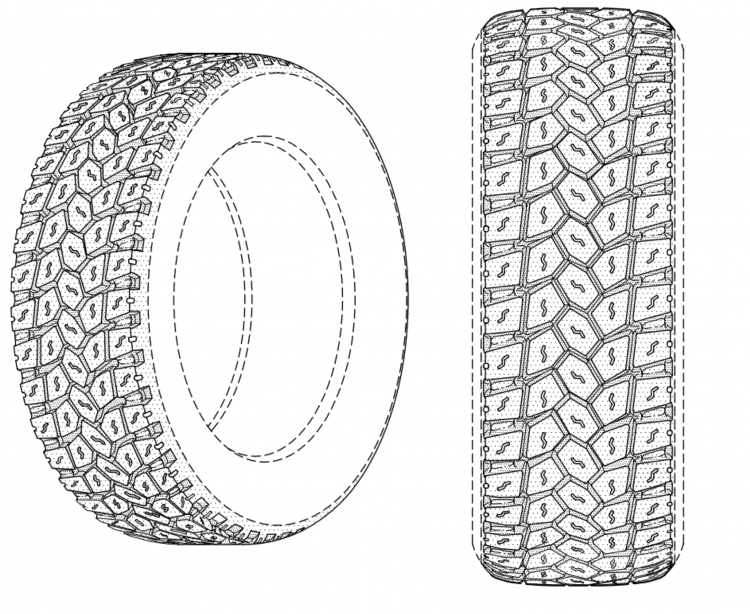 Tire stores and online retailers can help you with finding tires with the correct OE code for your vehicle.
Tire stores and online retailers can help you with finding tires with the correct OE code for your vehicle.
13) This is a list of the tire's construction materials, of interest primarily to tire engineers and tire geeks.
14) Every tire sold in the U.S. must have U.S. Department of Transportation (DOT) labeling. The first two characters indicate the factory of manufacture, and the next five or six are manufacturer-specific jargon (for tracking purposes, as in the case of a recall). The last four numbers give the date of production which let you know how old your tires are with the first two digits indicating the week and the latter two the year (for example, "2318" means that tire was produced in the 23rd week of 2018). The European equivalent of the DOT code may also be present (it starts with an "e"), although fewer manufacturers are printing both on a tire's sidewall. If this string of numbers ends with "-S," it means the tire complies with European noise regulations.
Tire Rack
Buy Now
Tire Rack
Buy Now
Tire Rack
Buy Now
Tire Rack
Buy Now
What's In This Guide?
If you value stability, traction, and being able to load more, you should go for a 245 tire as it is considerably wider. On the other hand, if you want to make your car perform better in deep snow, slush, or standing water, go for a 225 tire as a narrower tire is able to dig into snow and water a lot more easily.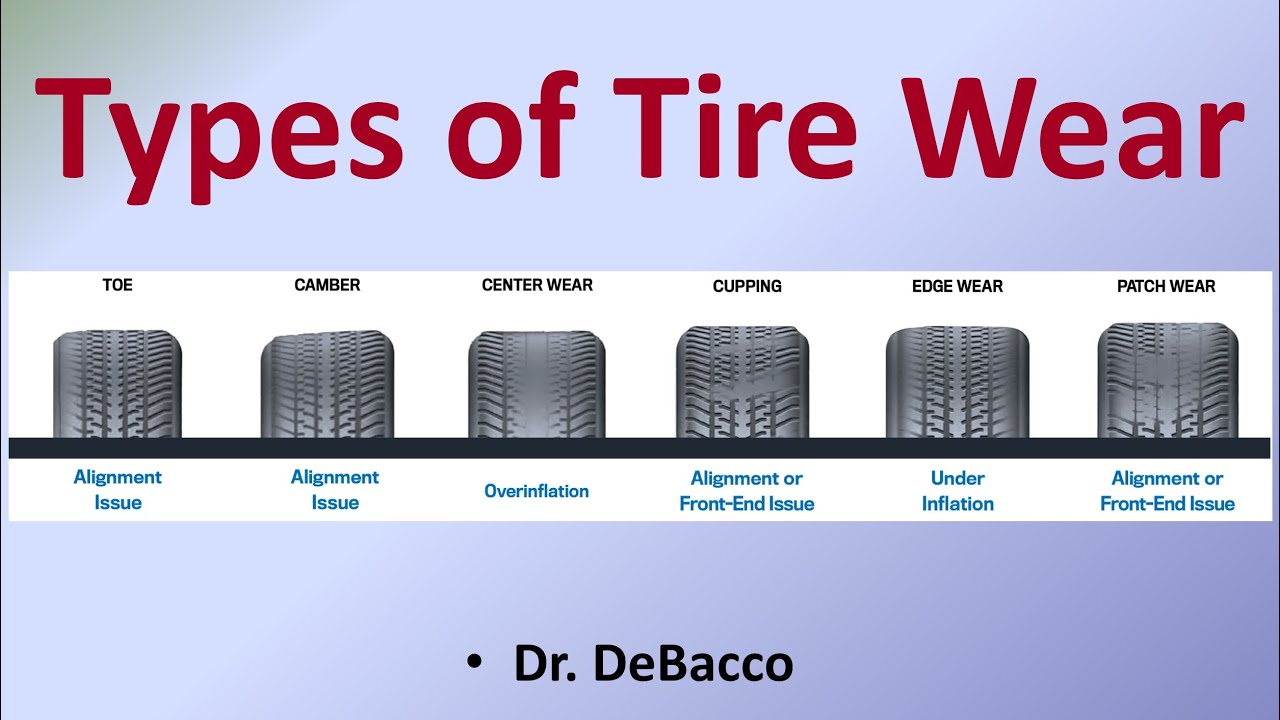
Furthermore, you are likely going to get a more fuel-efficient experience with a 225 tire while also making the car more comfortable. On the contrary, a 245 tire is also able to put the power down a lot better and is the preferred tire for high horsepower cars.
Even though different width tires don’t necessarily have to differ in price, they usually do. The logic behind this is simple, the more material is used, the more it costs to manufacture a tire. Even though this might seem negligible at first, when you are making millions of tires each year, you are likely going to spend less money on manufacturing a 225 tire as opposed to a 245 tire.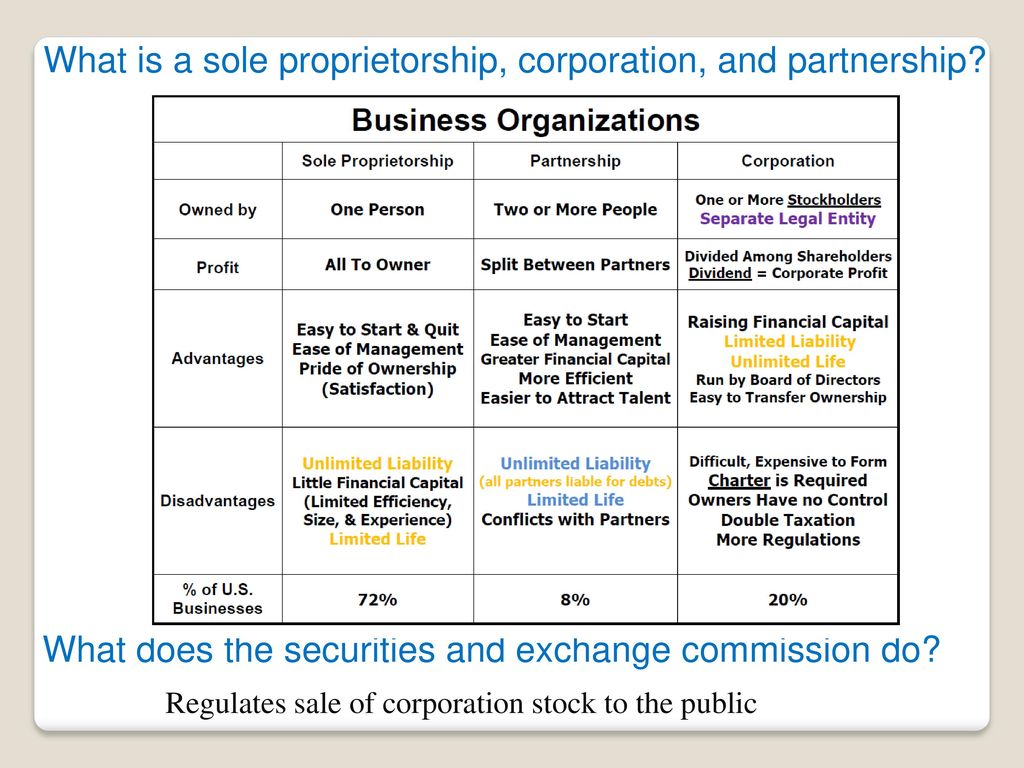
Either way, tire dimensions tend to correspond with tire pricing in general. As such, a 15-inch tire is likely going to be cheaper than a 17-inch tire. Moreover, a 225 tire is manufactured in higher quantities which also drives the price down.
Do 225 Tires Offer A More Comfortable Ride Than 245 Tires?In most cases, yes because the wider the tire, the more the ride is being compromised. It’s also worth mentioning that narrower tires are usually being offered with a higher sidewall ratio which means that the sidewall height is taller when compared to a narrower tire.
The higher the sidewall, the greater the area through which a tire can countereffect the effects caused by uneven road surfaces. Also, a narrower tire cuts through the air more efficiently which means that it is also quieter than a wider tire.
Are 225 Tires Better Than 245 Tires When It Comes To Snow Traction, Slush, And Standing Water?Whenever you step foot in deep snow, your leg tends to go through the snow before reaching a point in which the density of the snow stops your leg from going any further. However, when you stand on a snowboard, it does not go down because the contact patch of the snowboard is wider and is thus able to distribute your weight across a larger patch of snow.
However, when you stand on a snowboard, it does not go down because the contact patch of the snowboard is wider and is thus able to distribute your weight across a larger patch of snow.
This is the very same logic that is being applied to tires in snow, slush, mud, and standing water. A wider tire is more like a snowboard which means that the area that is pushing down on the snow is a lot wider and is thus unable to cut through the snow as efficiently. This makes all the sense in the world because, in most cases, you need to reach the ground if you want to maintain traction.
Do 225 Tires Offer Better Fuel Economy As Opposed To 245 Tires?The general principle is – the greater the rolling resistance, the more energy is needed to rotate the object. As such, a narrower (225) tire requires less energy to get moving because the area that is being moved is smaller. This means that the car does not need to burn as much fuel to create the energy needed to rotate a 225 tire.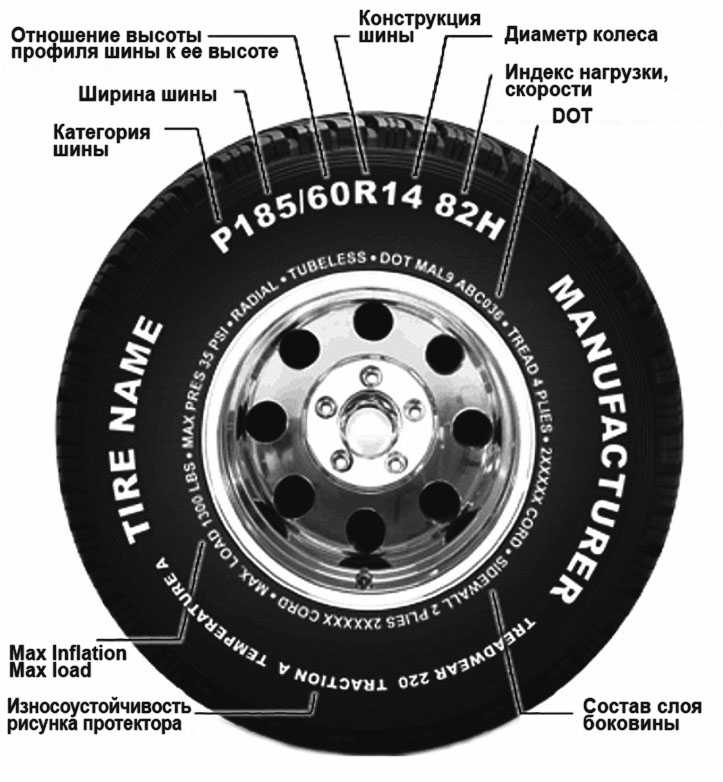
On the other hand, a wider (245) tire has a larger contact patch and it also tends to be heavier. In order to rotate it, the car needs to burn more fuel to rotate it. Therefore, a 245 tire is unable to match a 225 tire when it comes to fuel efficiency.
When it comes to putting the power down, the wider the tire, the better. Because the contact patch a 245 tire offers is larger than the one found on a 225 tire, it means that the tire essentially has a larger area that comes in contact with the road.
That is why most high horsepower cars these days come with wide rear tires because they are able to put the power down better. Some people even maximize the potential traction of a wider tire by opting for a so-called staggered setup.
A 245 tire is able to distribute the weight across all four corners of the car more evenly. This also benefits traction because the lateral G forces exerted during cornering can be a lot more easily managed with a tire that distributes the weight better.
The fact of the matter is, the better the weight management, the easier it gets to go fast through a corner.
Do 245 Tires Look Better Than 225 Tires?Looks are subjective, but one thing is for certain, no one likes to see a Ferrari sporting bicycle tires. Most exciting-looking and purpose-built cars (the ones people love the most) tend to come with wider tires. This is not done for the looks, but rather because of all the other benefits listed in this article.
However, it’s safe to say that most car enthusiasts agree that a wider set of tires benefits aesthetics. It makes the car squat more while also benefiting performance.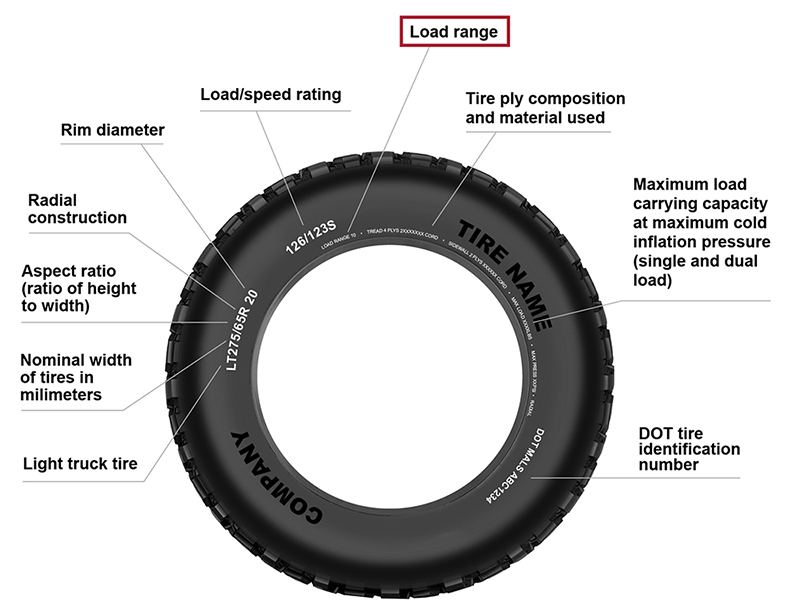
A tire load rating is indeed proportional to its width, therefore, a 245 tire is able to carry more weight as opposed to a 225 tire. By distributing the weight across a larger surface, you are basically lowering the per square inch pressure the tire needs to withstand. Remember what we talked about how your leg can dig into the snow a lot more easily than a snowboard.
It’s the same exact effect here too. A wider tire distributes the weight better which means that the forces that are being applied onto the surface are spread more evenly.
If you want to interchange 225 and 245 tires, you need to be sure that the rim on which the tire is being mounted on is able to fit a wider tire. Furthermore, a wider tire with a wider rim could potentially stick out of the wheel well which is likely going to increase the chances of a curb rash while also being illegal in some states.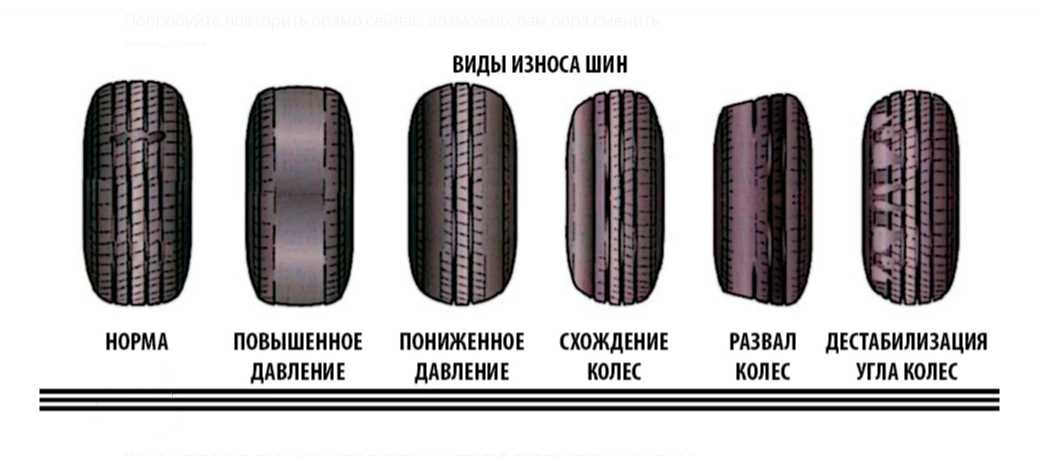
Be sure to visit a credible tire shop to get all the details you need about interchanging different tire sizes. Some cars are able to fit 245 tires without any issues while others are not.
Yes, they are. A 245 tire is approximately 10mm higher than a 225 tire. This also means that a wider tire is also going to increase your car’s ride height. This is because wider tires tend to have a higher aspect ratio which essentially means that they are not only wider but also taller as opposed to narrower tires.
A 225 tire is not inherently better than a 245 tire, and vice versa. This means that the perfect tire for you is one that fits your needs better. A 245 tire tends to benefit sports cars, cars that spend most of their time on the road, and cars that tend to haul and tow heavy loads.
On the other hand, 225 tires benefits cars that spend most of their driving time in snow, mud, deep water, or slush. Moreover, a 215 tire is also benefiting your overall efficiency, comfort levels, and your bank account.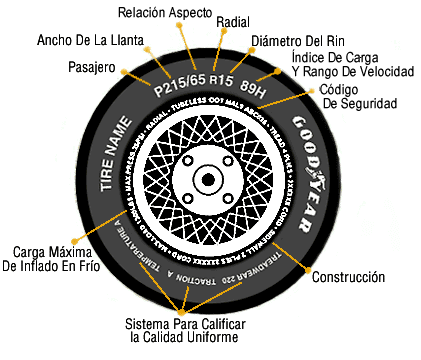
Many motorists are interested in the inscriptions on the tires only when it is time to change the shoes on the car. And in this case, people pay attention only to the size of tires. Meanwhile, on the sidewall of each tire you can find a lot of interesting things, up to the speed at which the wheel will burst.
Of course, the most important information that is on the tire is its dimension. This is the necessary minimum of knowledge, which is enough to replace tires. The view familiar to us, for example 185/65 R15, is a metric sizing system. In the case of SUVs, the size in inches is often found - 31 × 10.5 R15. nine0003
245/45 R18 says that we have a tire with a width of 245 mm, a profile height of 45% of the width (about 110 mm), the tire itself is radial, and all this stuff is mounted on an 18-inch disk. If the size is indicated in this form: 215R16, then know that the profile height of this tire is 82%.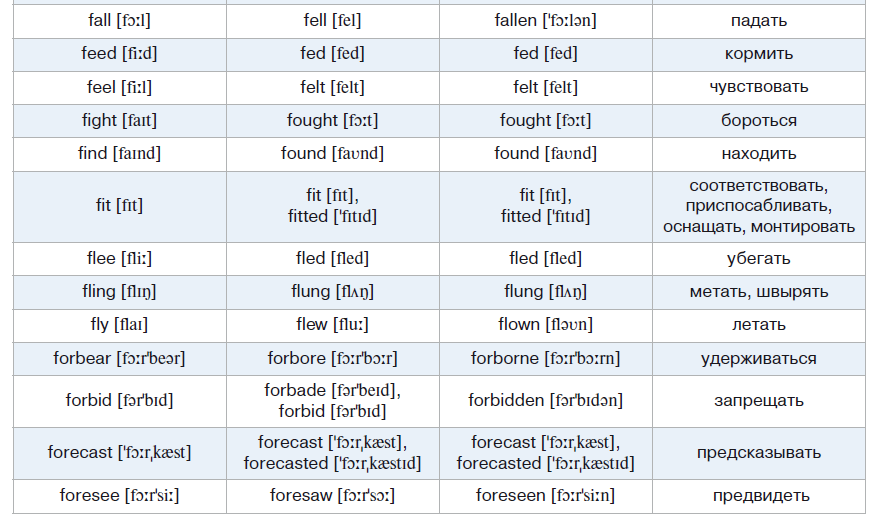
Understanding how tire size is determined, you can perform a tricky trick: choose tires for the season that will improve car handling, reduce fuel consumption, and even save on their purchase. Usually, for any car, the manufacturer recommends two to three sizes. Information about this is on the front door or the middle pillar of the body. nine0003
For example, on our popular LADA Vesta, Hyundai Accent and Kia Rio, you can put 185/65 R15 and 195/55 R16. Can serve as an alternative and 175/70 R14. For winter, it is preferable to take narrower tires, as they provide more pressure in the contact patch, that is, better grip. Narrow tires will be easier to drive on snow, which means that the cross-country ability will increase and it will be easier to start. And the price is more pleasant - you can save up to 25% of the cost. The main thing is not to forget to change the disks in this case. nine0003
30x9.5 R15 means: This tire is 30" OD, 9. 5" wide, designed for 15" rims. If only the tire width is indicated and the number ends with zero (8.50 R16), then the profile height is 92%, if it is not zero at the end (8.25 R20), then the height is 82%.
5" wide, designed for 15" rims. If only the tire width is indicated and the number ends with zero (8.50 R16), then the profile height is 92%, if it is not zero at the end (8.25 R20), then the height is 82%.
More and more tires now have directional tread patterns, a trend that extends to both summer and winter tyres. The tire will work correctly only if it spins in the right direction, otherwise the grip will deteriorate drastically. However, initially all such tires are the same, but it is important to divide the wheels with disks into right and left. To do this, there is an arrow on the sidewall showing the direction of rotation, often with the inscription Rotation. nine0003
The arrow labeled Rotation indicates which direction the tires should rotate.
The direction of rotation must also be observed if the tires are asymmetrical. They have the inscriptions Inside and Outside, that is, the inside and outside, so after mounting on the disks they also become left and right. We often see cars on the roads with tires installed backwards, and believe me, you should stay away from them.
We often see cars on the roads with tires installed backwards, and believe me, you should stay away from them.
If the tires are installed correctly, you should not see this. This side of the tire must be inside, that is, hidden from view
In addition to width, profile height and bore diameter, each tire has information about the permissible load and maximum speed. It is this data that contains information about when the tire will explode. But don't worry, there's no need to run to your car and check if the right tires are on and if you're driving too fast. Even the smallest, 13-inch tires are designed for one and a half tons of load, and domestic traffic rules do not allow accelerating to such speeds that modern tires are no longer able to withstand. nine0003
The designation 92R says that each tire can withstand a load of 630 kg, and you can accelerate to 170 km / h on them
But if curiosity takes over, then know that the load index is a two- or three-digit figure, from 0 (45 kg per wheel) to 199 (13,600 kg), and the speed index is the letter behind it, from A - 40 km / h to Z - over 300 km / h.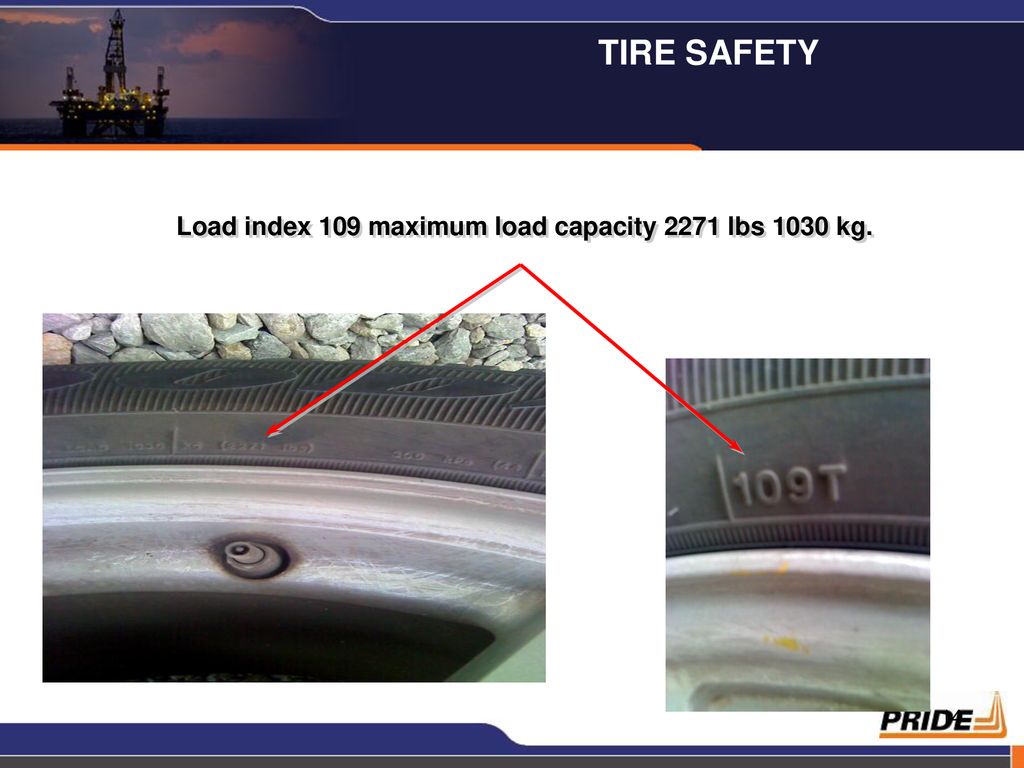 For example, the 235/65 R17 108T MICHELIN Latitude X-Ice 2, our winter tire test winner, has a maximum load of 1,000 kg per tire and can be operated at speeds up to 190 km/h
For example, the 235/65 R17 108T MICHELIN Latitude X-Ice 2, our winter tire test winner, has a maximum load of 1,000 kg per tire and can be operated at speeds up to 190 km/h
The ZR index deserves mention. At one time, it appeared to refer to sports tires capable of withstanding speeds over 240 km/h. However, with the appearance of the V, W and Y indices, the need for it disappeared, but they decided to leave the index, since it was already well-known and it is marketing beneficial.
| Speed index | Permissible speed, km/h | Load index | Permissible load, kg |
|---|---|---|---|
| E | 70 | 92 | 630 |
| F | 80 | 93 | 650 |
| G | 90 | 94 | 670 |
| J | 100 | 95 | 690 |
| K0067 120 | 97 | 730 | |
| M | 130 | 98 | 750 |
| N | 140 | 99 | 775 |
| P | 150 | 100 | 800 |
| Q | 160 | 101 | 825 |
| R0068 | 850 | ||
| S | 180 | 103 | 875 |
| T | 190 | 104 | 900 |
| U | 200 | 105 | 925 |
| H | 210 | 106 | 950 |
| 0065 | |||
| W | 270 | 108 | 1 000 |
| Y | 300 | 109 | 1 030 |
| ZR | >240 | 110 | 1 060 |
Only when choosing tires for vans or minibuses, you should be careful, as most ordinary passenger tires are suitable for many models.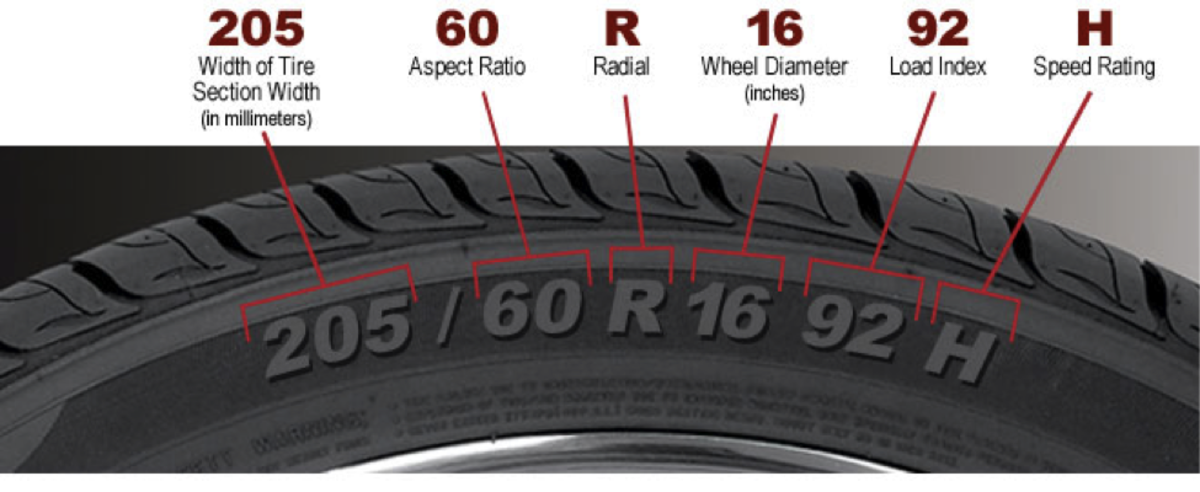 And here you need tires marked C (commercial vehicles with increased payload) or LT (Light Truck, or light truck). These letters can be found next to the tire size. Sometimes people are tempted by the low cost of such tires, buying them for passenger cars. This is absolutely not worth doing! nine0003
And here you need tires marked C (commercial vehicles with increased payload) or LT (Light Truck, or light truck). These letters can be found next to the tire size. Sometimes people are tempted by the low cost of such tires, buying them for passenger cars. This is absolutely not worth doing! nine0003
Often on the sidewall there is a separate mention of the maximum load and maximum pressure
The letter C after R16 indicates that we have a tire for gazelles and sprinters
Double load index indicates that the tire is designed for
Reinforced means reinforced sidewall, these tires are also designed for increased load capacity
Light tires designed for increased load can be considered an intermediate link between passenger tires and tires for commercial vehicles. They can be distinguished by the inscriptions XL (Extra Load) or Load Range. nine0003
In addition, there is such a thing as the ply rate - Ply Rating (PR). It indicates the strength, or bearing capacity of the carcass: 2-4 - for passenger tires, 6 - for tires with increased load, more than 8 - for trucks, 18 - for buses.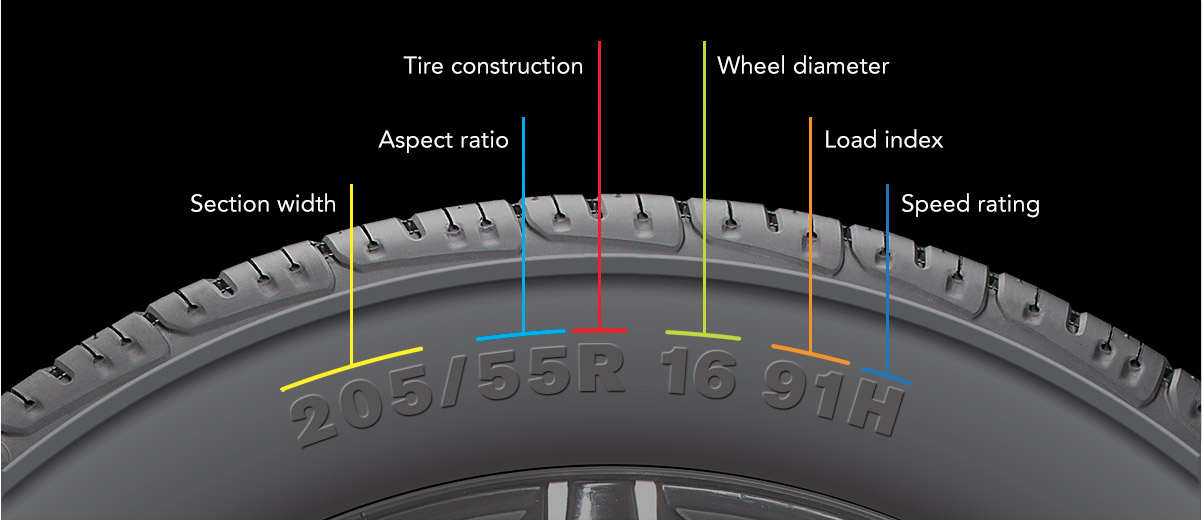
If you see the designation ST, then you have Special Trailer, that is, tires for trailers / vans, and you cannot use them for cars. Spare tires, in the event that this is not a full-fledged wheel, but the so-called smaller stowage, are marked with the T symbol, that is, a temporary replacement. Passenger car tires are marked with the letter P in front of the size, but manufacturers often omit this designation. nine0003
Tire seasonality is the next most important designation. Tires, as you know, are summer, winter and sometimes all-weather. Winter tires can be identified by the snowflake pictogram against three peaks (an international symbol with its own 3PMSF code). But getting the right to apply this designation is not so simple. Therefore, on many tires there are snowflakes, but as a decor. The same applies to the designation M + S (Mud + Snow, that is, mud and snow). True, summer tires for SUVs have the same marking, but in this case it only means that the tire is designed for off-road use.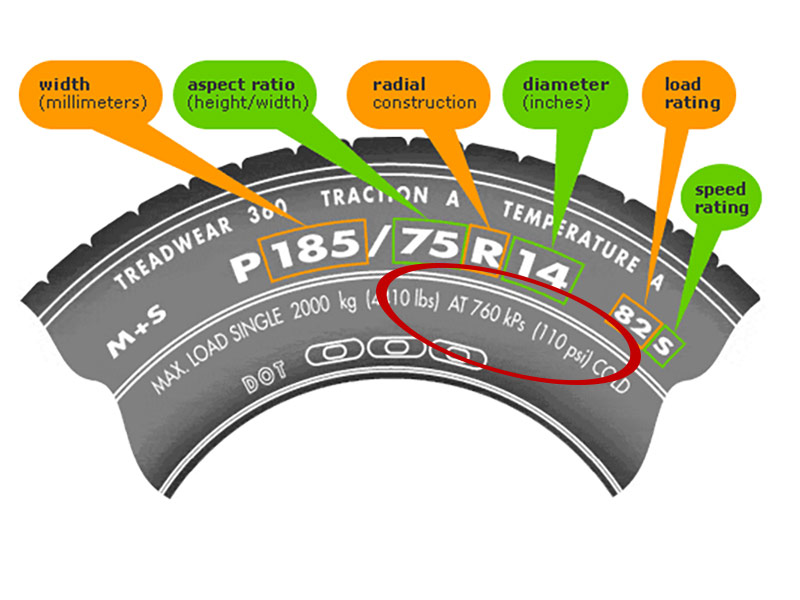 On winter studded tires there is the word Studded, on non-studded tires - Studless. If there is an inscription Studdable on the sidewall, then these are studded tires, that is, with holes for installing studs. nine0003
On winter studded tires there is the word Studded, on non-studded tires - Studless. If there is an inscription Studdable on the sidewall, then these are studded tires, that is, with holes for installing studs. nine0003
There is no approved and certified marking for all season tires. But manufacturers often apply this or a similar pattern (sun, snowflake and rain), claiming that such a tire is good in any weather. This is Goodyear Vector 4 Seasons, however, in the conditions of the Kazakhstani winter, this is far from the best choice.
Winter studded tires have this marking or something similar
Summer tires either do not have special markings or have markings indicating that the tire performs well on wet surfaces - a painted umbrella or words such as Aquatred, Aquacontact, Rain , Water and Aqua. The designation M/T (Mud and Terrain, that is, mud surfaces), which marks off-road tires, is not a certified symbol. This designation of mud tires is present only in the model name.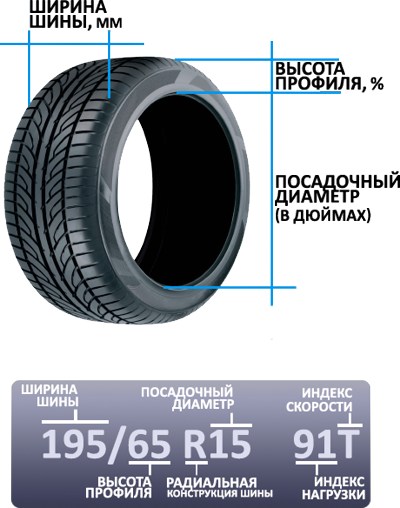 nine0003
nine0003
Such an inscription indicates that the tire can be studded
All other information can be called reference, and it is not necessary to know it at all, however, after digging around, you can learn a lot of interesting things about each of the tires. For example, the age of a tire. The four digits enclosed in an oval (more often found on the inner sidewall) are the DOT marking, or simply the production date. The first two digits indicate the week, and the last two indicate the year of manufacture. It's funny, but if there are 52 weeks in a year, then there are 54 in the production of tires.
Found on tires and additional small pattern. As soon as the pattern is no longer visible (that is, the run-in layer is worn off), the tire begins to work at full strength
The numbers 2116 on this tire indicate that it was released in May 2016 (21st week)
Next with the word DOT, you can also find the manufacturer's internal information.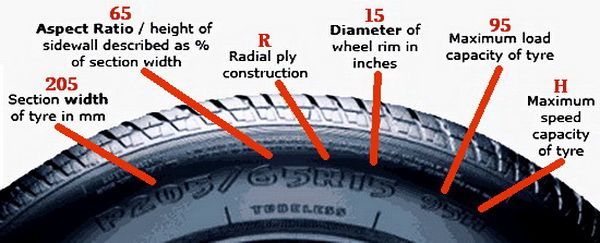 In this case, it is 60RB, which means plant code, batch number, mold information, or something similar. If there are only three numbers, then you need to run away from such tires like fire or use them for decorative purposes, for example, make a flower bed. Three digits are present on tires manufactured before 2000. The first two digits are the week, and the last is the year, and such a tire can be either from 90s (you can recognize it by the next triangle), and from the 80s (if there is no triangle).
In this case, it is 60RB, which means plant code, batch number, mold information, or something similar. If there are only three numbers, then you need to run away from such tires like fire or use them for decorative purposes, for example, make a flower bed. Three digits are present on tires manufactured before 2000. The first two digits are the week, and the last is the year, and such a tire can be either from 90s (you can recognize it by the next triangle), and from the 80s (if there is no triangle).
Some tires (UTQG-grading found on North American tires) have information about heat resistance, grip and possibly mileage. The word Temperature and the letters A, B or C after it mean how resistant the tire is to high speeds: A is resistant, C is not very ... Traction A, B or C talk about braking distance on wet pavement. A is the best estimate. Treadwear and the numbers after it indicate the expected mileage. They measure it according to a special technique, so the numbers will not say anything and are useful only for comparing several tires.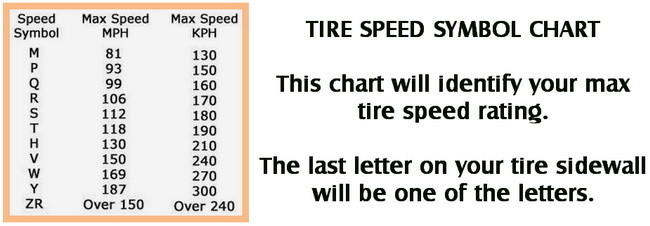 nine0003
nine0003
By the way, for four years now all tires sold in Europe have had a special marking that classifies tires by grip on wet pavement, rolling resistance and noise level. True, information about this is often present only on the label, which is removed from the tire before use. These indicators deserve a little more attention, since tires are divided into six classes according to the level of rolling resistance and grip - from A to G. A is the best, G is the worst. nine0003
External noise level is a very subjective indicator. 70 dB is considered an average, but "instrumentally" quieter tires will not always be perceived as such
Many may be surprised, since a lot of world brand tires are made in Eastern Europe, and even in Russia. In our neighboring country, MICHELIN, Nokian, Pirelli and Continental tires are produced. The country of origin now does not affect the quality of tires in any way, otherwise tires made in Russia would not be supplied to Europe, Asia and America.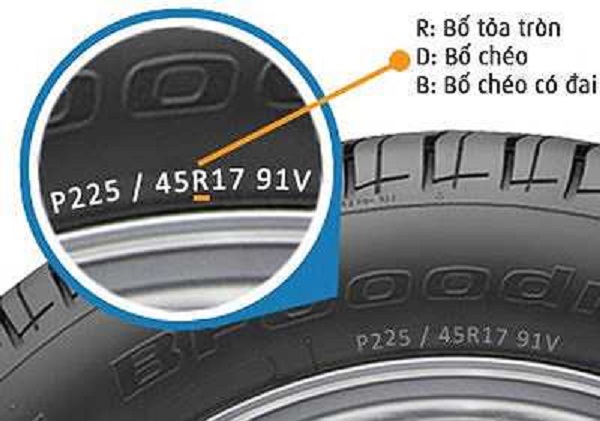 nine0003
nine0003
However, information about tire quality can be found indirectly by looking at the ECE country code. It tells you in which country the tire was certified and contains the number of the certificate itself. We are talking about international certification, that is, in Kazakhstan, the operation of tires certified by other countries is allowed. Marking indicating in which country the tire was certified and the certificate number itself: